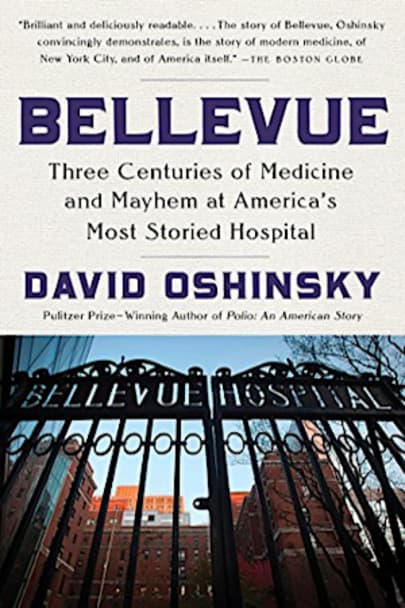From a Pulitzer Prize-winning historian comes a riveting history of New York’s iconic public hospital that charts the turbulent rise of American medicine. Bellevue Hospital, on New York City’s East Side, occupies a colorful and horrifying place in the public imagination: a den of mangled crime victims, vicious psychopaths, assorted derelicts, lunatics, and exotic-disease sufferers. In its two and … sufferers. In its two and a half centuries of service, there was hardly an epidemic or social catastrophe—or groundbreaking scientific advance—that did not touch Bellevue.
David Oshinsky, whose last book, Polio: An American Story, was awarded a Pulitzer Prize, chronicles the history of America’s oldest hospital and in so doing also charts the rise of New York to the nation’s preeminent city, the path of American medicine from butchery and quackery to a professional and scientific endeavor, and the growth of a civic institution. From its origins in 1738 as an almshouse and pesthouse, Bellevue today is a revered public hospital bringing first-class care to anyone in need. With its diverse, ailing, and unprotesting patient population, the hospital was a natural laboratory for the nation’s first clinical research. It treated tens of thousands of Civil War soldiers, launched the first civilian ambulance corps and the first nursing school for women, pioneered medical photography and psychiatric treatment, and spurred New York City to establish the country’s first official Board of Health.
As medical technology advanced, “voluntary” hospitals began to seek out patients willing to pay for their care. For charity cases, it was left to Bellevue to fill the void. The latter decades of the twentieth century brought rampant crime, drug addiction, and homelessness to the nation’s struggling cities—problems that called a public hospital’s very survival into question. It took the AIDS crisis to cement Bellevue’s enduring place as New York’s ultimate safety net, the iconic hospital of last resort. Lively, page-turning, fascinating, Bellevue is essential American history.
more



A great story of America’s first public hospitsl
A public hospital where no one is turned away. Interesting subject.
Wonderful history of Bellvue
This is a very comprehensive history of the ever changing population of New York City and the public and private hospitals that care for these New Yorkers. In spite of underfunding from the city, Bellevue excels in many areas, particularly in medical training for young doctors from NYU and Cornell. Because of the diversity and wide-ranging illnesses of the population, a doctor at Bellevue has seen more and learned more than doctors training at the voluntary private hospitals. The book discusses 9/11 and Bellevue, when very few patients materialized, because they either escaped or were killed immediately. Also the impact of Hurricane Sandy, which flooded Bellevue, killed most of the laboratory animals, and caused a heroic hand-by-hand evacuation of patients whose lives and safety were threatened by loss of electrical power. I found this book fascinating.
Having always heard of New York City’s Bellevue as a place where the mentally ill were sent for observation, I learned it was so much more. Specifically I was looking for references to Blackwell Island and the treatments for tuberculosis in the early 1900s. Not find much on that topic did not diminish its value to me. Realizing the diversity of humanity served at this legendary hospital as well as its role as refuge of last resort for the disparate of New York City, I was schooled and humbled by reality.